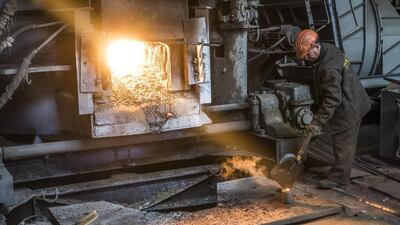Who invented modern steel?
It’s a 160-year-old controversy that’s still going strong – and the answer, in a way, lies at the heart of the current US-Chinese trade tensions.
Many Americans are taught that the originator was William Kelly, whose ironworks in Eddyville, Kentucky was among the first to produce the metal. In the UK and elsewhere, credit generally goes to Henry Bessemer, who obtained the first patents for a mass production process that’s used in modified form to this day .
As with the battles between Alexander Graham Bell and Elisha Gray concerning the telephone and those between Nikola Tesla and Guglielmo Marconi over the development of radio, everyone wants to take credit for a world-changing invention.
While the truth falls more on Bessemer’s side , it’s worth trying to imagine how the world might have turned out if 19th century Britain had taken the same road in relation to technology and national development that 21st century America is headed down now.
US President Donald Trump’s planned list of tariffs on $50 billion worth of Chinese goods will home in on technologies where China wants to establish itself as a leader, five people familiar with the matter told Justin Sink of Bloomberg News recently.
The core of the dispute is Beijing’s Made in China 2025 programme, a road map to upgrade the country’s abilities in high-tech manufacturing. The plan attracted little notice and less alarm when it was announced in 2015 in the wake of a similar initiative by India, but it’s now taken on talismanic qualities in Washington. Made in China 2025 was mentioned more than 100 times in the US Trade Representative’s March report on alleged violations of US intellectual property, where it was characterised as part of a suite of policies that threaten the competitiveness of American industry.
Let’s imagine that the government of Victorian England, instead of allowing Bessemer to licence his process to the likes of Andrew Carnegie, had managed to kill off the nascent US steel industry and insisted the country import from the British Isles instead.
The transcontinental railroad, which opened up the food bowls of the US prairies and helped feed the world in the late 19th century, might never have been viable with more costly metal shipped across the Atlantic. George Westinghouse, who got his start in industry building brakes for rail cars, might not have had the capital to invest in the development of mass electrification. Forced to depend on expensive British-made structural beams, the towers of Chicago and New York might never have risen.
_______________
Read more:
Should a China-US trade war worry UAE investors?
US trade envoy meets with EU and Japan over steel tariff row
_______________
It seems a ridiculous counterfactual, but it’s only so because the idea of denying China a place at the high-tech table is equally ridiculous. It’s only natural for a country that’s becoming (and in many respects already is) the biggest consumer of advanced manufactured goods to want to develop more homegrown expertise. That’s especially so given China’s fears of getting caught in the middle-income trap.
America in the 19th century was as famous for its slapdash approach to intellectual property as China is now. Before the Kelly-Bessemer dispute, Samuel Slater helped kick off the US industrial revolution by memorising details of the Derbyshire cotton milling process. He then slipped into New York disguised as a farmer to get around British laws intended to stop foreign powers acquiring its technological expertise. Charles Dickens, too, spent much of his 1842 trip to the US agitating for copyright laws to prevent the bootlegging of his works by American publishers.
It’s understandable that western businesses dependent on their expertise in sophisticated manufacturing should be nervous about the emergence of a powerful new competitor. And to be sure, there are aspects of the Made in China 2025 agenda – such as the setting of domestic production quotas and the abuse of technology transfer agreements – that should be addressed. Still, as we’ve argued before, a less confrontational approach is far more likely to bear fruit – one that takes advantage of Beijing’s own desire to improve handling of intellectual property and rebalance its economy toward consumption.
Opposition to the spread of technology is a short-sighted way to confront China’s economic rise. Despite some pockets of highly sophisticated manufacturing, services make up more than three-quarters of America’s gross domestic product, and aren’t likely to lose their dominance any time soon.
Even if the US stood a chance of prevailing in the trade war now brewing – a doubtful proposition – it would be the wrong approach. America has far more to gain in the long term by trading with a more prosperous China than one that’s been stunted by an ill-advised attempt to freeze its economy in the past.
Bloomberg

